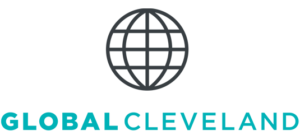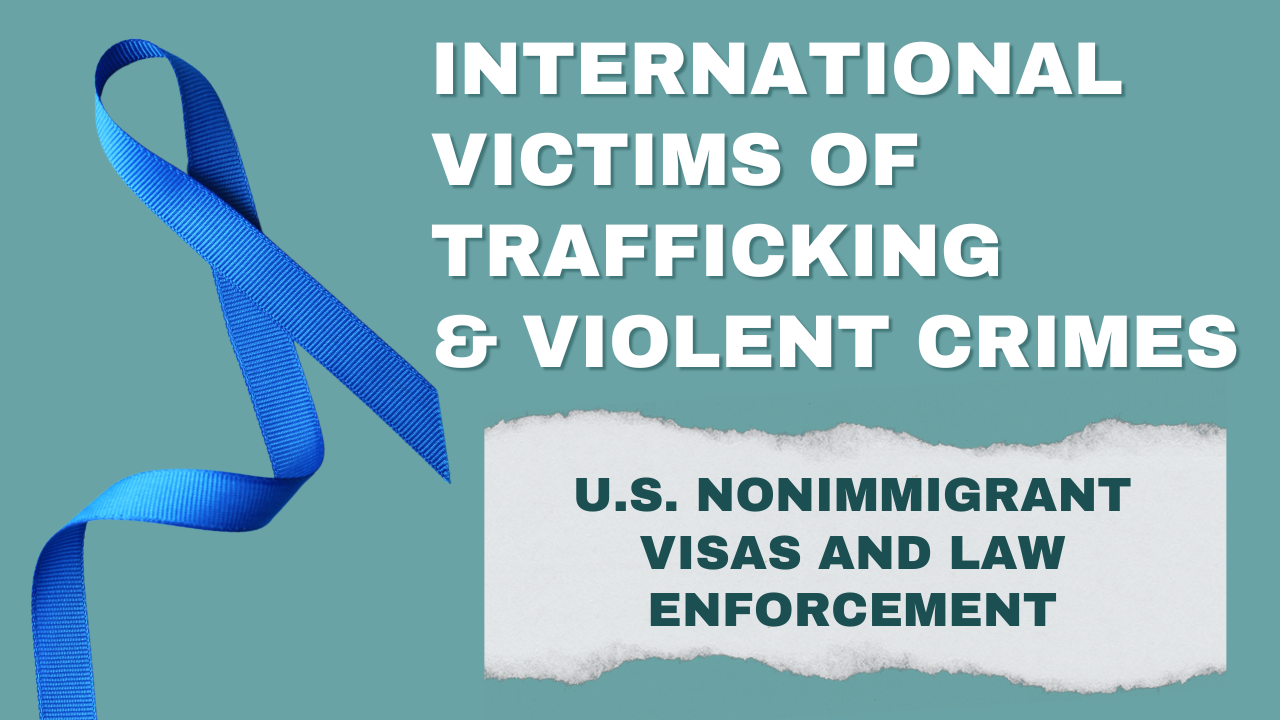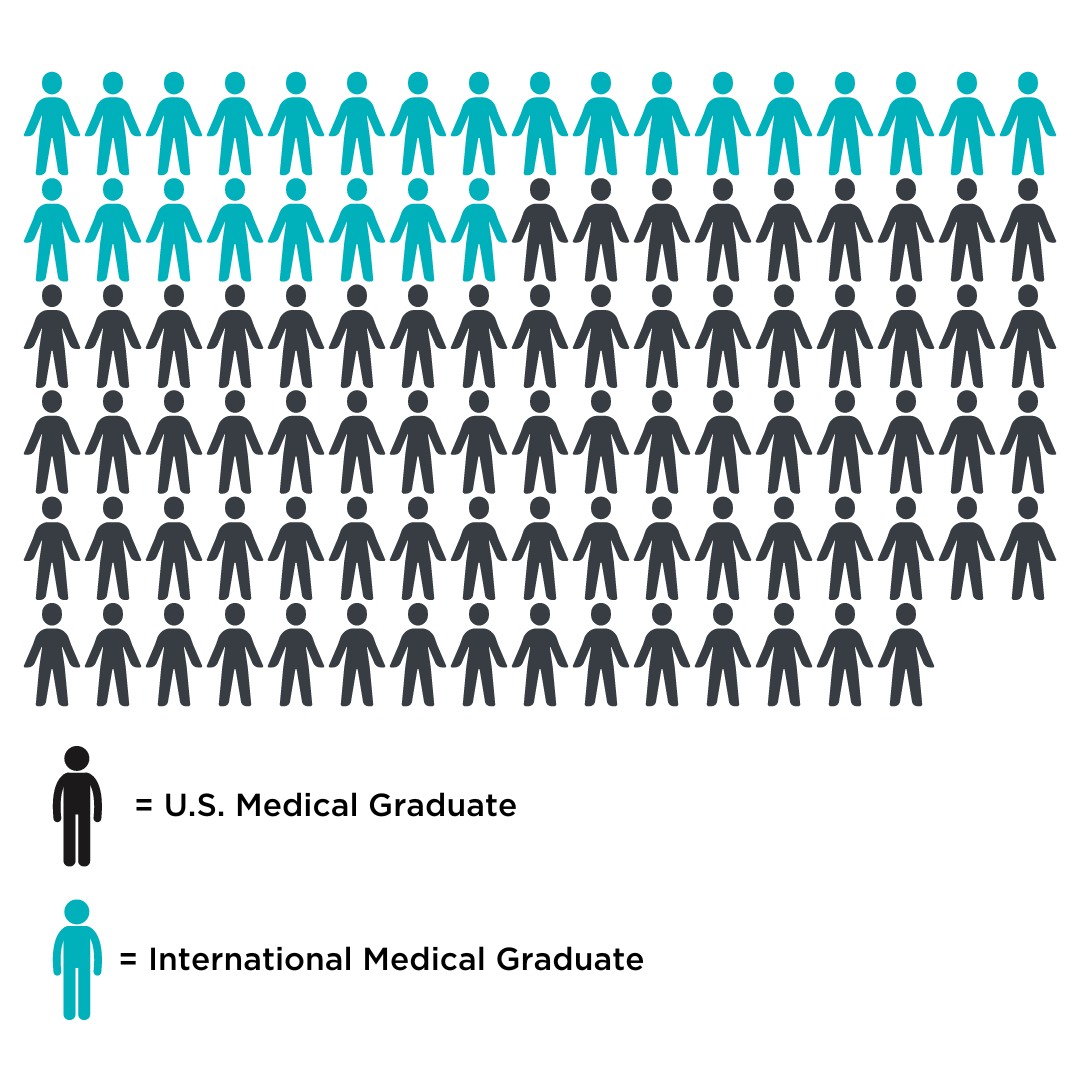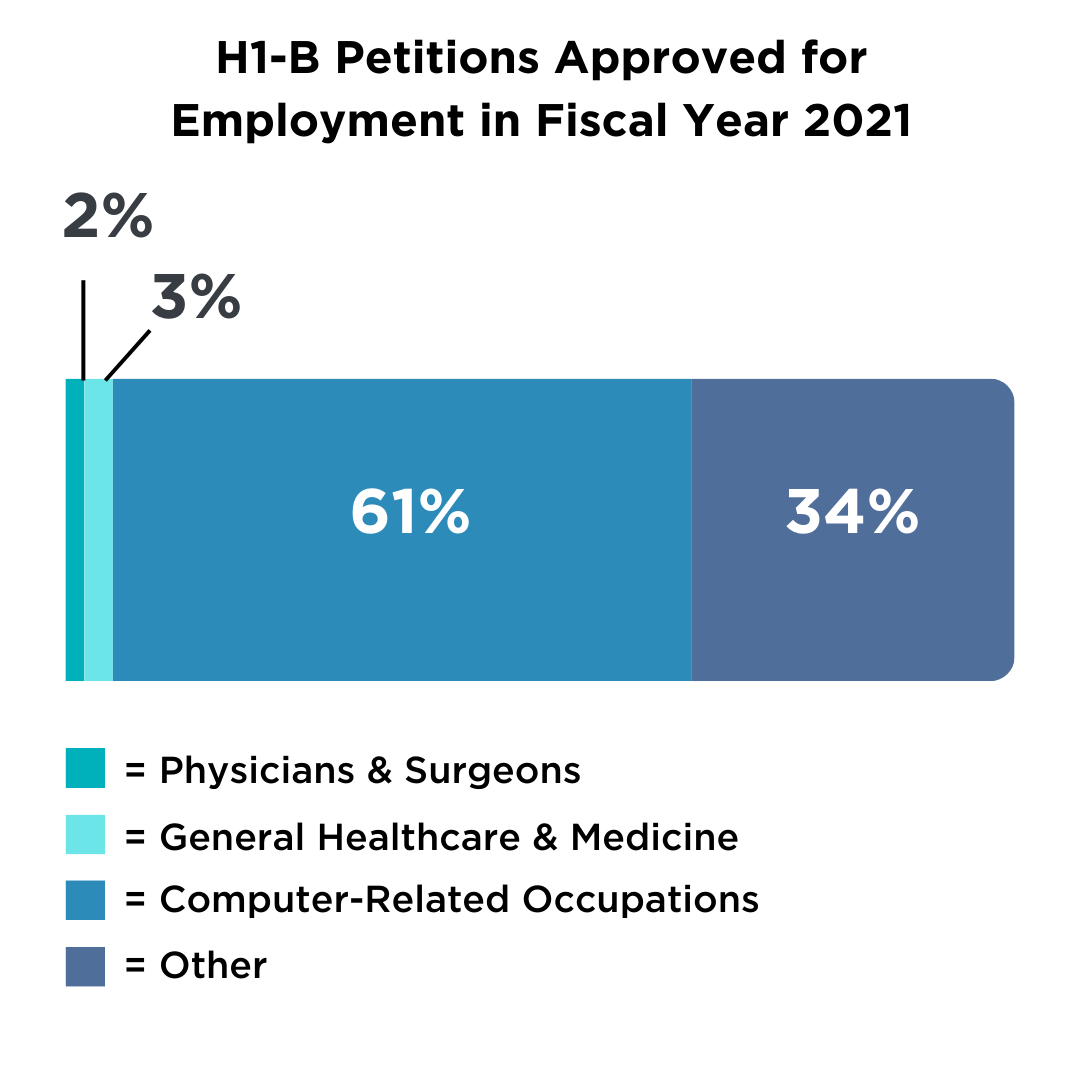Resources for Victims & Survivors of Trafficking and Violent Crimes
Resources for Victims & Survivors of Trafficking and Violent Crimes
U.S. Department of Homeland Security Resources:
U Visa Law Enforcement Resource Guide
T Visa Law Enforcement Resources | Homeland Security
1. Sus Abogados Latinos:
https://susabogadoslatinos.com/
A full Spanish-speaking law firm in Painesville, Ohio, offering cost-effective legal services in Migration, legal defense, family, and civil law. Led by attorney, Patrick Espinosa, the firm prioritizes personalized attention, cultural understanding, and positive outcomes for clients.
2. The Collaborative to End Human Trafficking:
Dedicated to eradicating human trafficking through advocacy, education, and coordinated community responses. The Collaborative offers resources, training sessions, and opportunities for community engagement to raise awareness and support survivors.
3. The Renee Jones Empowerment Center:
Provides holistic restorative services for minor and adult victims of human trafficking and sexual assault. Their mission includes empowering individuals through personal, social & professional development, while actively engaging the community in prevention and education efforts.
4. The Cleveland Rape Crisis Center:
https://clevelandrapecrisis.org/
Supports survivors of sexual abuse and rape in NEO, promoting healing, prevention and social change through counseling, advocacy, and education programs. Their services are available to individuals of any gender identity or age and loved ones.
5. Family Justice Center:
https://cuyahogacounty.gov/psjs/divisions/witness-victim-service-center/family-justice-center
Assists individuals with complex cases of domestic violence, sexual assault, child abuse, elder abuse, and stalking. Services include help with protection orders, communication with law enforcement, and access to counseling.
6. Journey Center for Safety and Healing:
Provides information and services for domestic violence and child abuse, including emergency housing, counseling, and advocacy. They offer a 24-hour crisis hotline for immediate assistance.
7. ASIA Inc.:
Health and human services agency operating two Federally Qualified Health Centers in Cleveland and Akron. Provides culturally and linguistically appropriate healthcare and comprehensive social services to support the International Newcomer community.
8. Ohio Crime Victim Justice Center:
Provides resources, including safe housing options, counseling services, child advocacy centers, and rape crisis centers. They also offer a Victims Rights Toolkit and assistance with legal processes.
9. Thrive Peer Recovery Services:
https://thrivepeersupport.com/
Connects individuals struggling with mental health, substance use disorders, and peer recovery support services, offering programs like one-on-one support, community linkage, and health systems peer support. Their mission is to empower individuals throughout their recovery journey by embracing all pathways that foster trusting relationships, community engagement, and personal growth.
10. Cuyahoga County Witness Victim Service Center:
https://cuyahogacounty.gov/psjs/divisions/witness-victim-service-center
Offers crisis intervention, counseling, support, advocacy, information, and referrals to victims of violent crimes.
Supporting International Med. Grads
Healthcare is arguably Northeast Ohio’s strongest sector; we are home to world-class, internationally renowned hospitals and healthcare institutions that provide exceptional care and drive economic growth to our region. Healthcare is also one of the most international sectors of our economy.
A study published in 2022 found that “physician” was tied for the most common profession for foreign-born Northeast Ohio residents. Despite this, across the country hospitals are facing severe staffing challenges, and Northeast Ohio is not immune to this shortage.
Nationally, the United States could see a shortage of 139,000 physicians within the next decade (American Association of Medical Colleges). Due to retirement, the aging of Ohioans, and an increased population, Ohio will be short 1,200 primary care physicians next year (Ohio Academy of Family Physicians). If these demographic trends continue, Ohio’s physician workforce will need to grow 8% just to keep pace with our healthcare demands (Robert Graham Center).
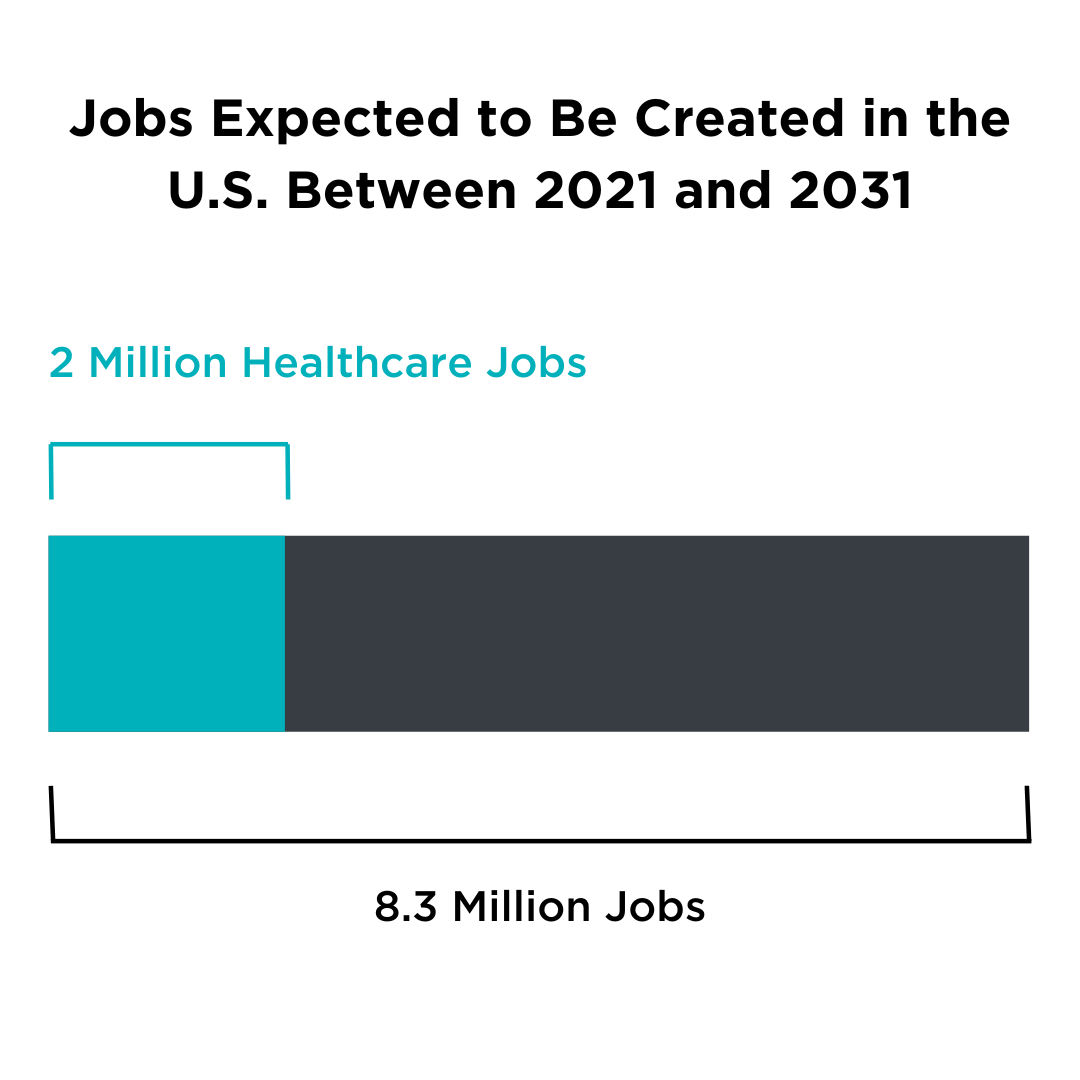
By embracing the international talent that has contributed so much to our healthcare sector, Ohio can take steps to remedy this workforce shortage problem and make our hospitals and healthcare institutions even stronger, benefitting all residents of our state.
International Medical Graduates (IMGs) make great contributions to our healthcare sector, comprising 25% of the physician workforce nationally. Since 2010, the rate of IMGs practicing in the United States has grown 18%. Twenty million Americans live in areas where IMGs are over 50% of the physician workforce, and Ohio is no exception (American Medical Association).
In order for IMGs to reenter their healthcare field of expertise upon entering the U.S., IMGs must repeat their residency, an expensive and lengthy process that deters many. Today, over a dozen states have addressed this issue, adopting legislative solutions in a bipartisan effort to increase the physician workforce and improve access to care.
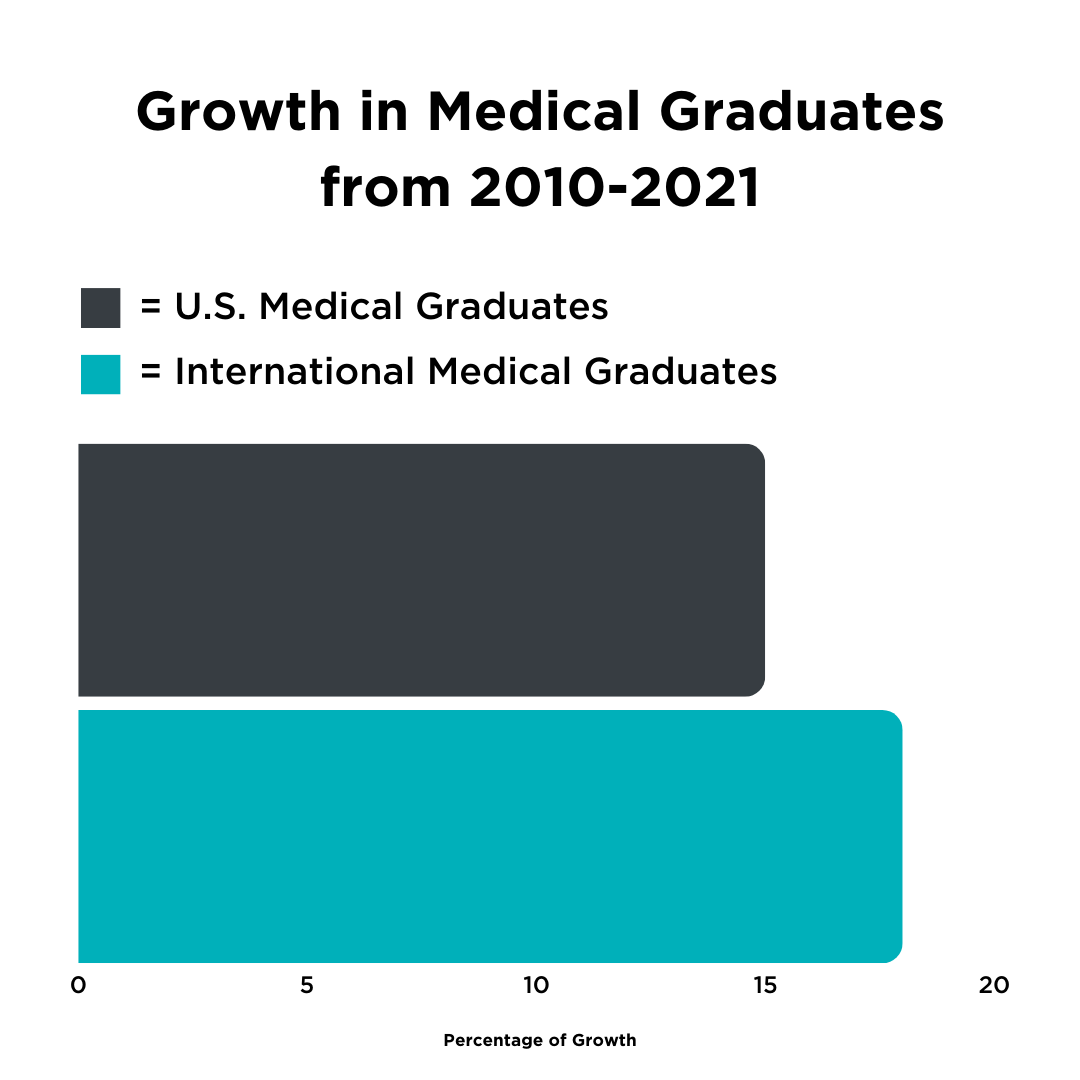
The bills being introduced reflect the unique workforce needs and the broad political perspectives of the states introducing them. Impressively, the majority of these bills pass with bipartisan support and with the approval of the state’s Medical Board. Some states create IMG legislation to prioritize care to underserved communities, while others require an IMG to receive supervision from different entities before they can obtain temporary or full licensure. What unites all of these legislative efforts is a recognition that internationally educated physicians will help us meet healthcare workforce needs throughout the country.
Supporting the reentry of IMGs into the medical workforce will have a resounding impact on our ability to access care and our economy. In fact, 40% of newcomers with medical degrees are working in jobs beneath their education (The American Migration Council). This contributes to $39 billion in lost wages and $10 billion in unrealized taxes every year (National Institutes of Health). Regulatory changes could benefit domestically educated residents as well, with IMGs comprising over 30% of the state’s capacity for medical residencies in a given year (Residency Programs List). Because IMG legislation would allow certain qualified newcomers to bypass residency, over 100 residencies could be opened to domestically educated trainees who would otherwise not receive a placement.
Beginning in 2024, Global Cleveland has worked to advocate for this issue, educating stakeholders in the medical sector and aligning our voices to advance urgent and commonsense IMG solutions for our state. We’ve met regularly with partners at the region’s hospitals to receive feedback and their expert analysis of the regulatory considerations to ensure the continuation of high-quality care. We’ve also worked closely with state and national coalitions like Vibrant Ohio and the American Migration Council to develop a bill that reflects the best practices nationally, meets our state’s needs, and increases healthcare access for all Ohioans.
Moving forward, Global Cleveland will continue elevating the needs of IMGs, garnering the support of the medical community, and engaging elected officials in earnest to advance this potential workforce solution. As we continue in these efforts, we encourage anyone interested to subscribe to our monthly IMG newsletter, which will track our progress, report on data concerning the healthcare sector and IMGs’ contributions, and share other ways to get involved.
All Ohioans will benefit if our great hospitals and healthcare institutions can bring on board the best talent in medicine from around the world. Global Cleveland looks forward to playing a role in making this a reality for our state; and we look forward to hearing from friends and partners on this important issue.

Ohio Healthcare Shortages & International Medical Graduates
Migration Policy as a Matter of Public Health: Reducing Barriers for International Medical Graduates in Ohio
Want to know how IMGs can help address the Ohio healthcare shortage? Read our full paper exploring the topic here:
How International Medical Grads Can Solve Ohio’s Healthcare Shortage
There is an Ohio Healthcare Shortage - Why We Need IMGS
Ohio healthcare shortages cannot be ignored.
Current statistics report that by 2025, Ohio will be short of 1,200 primary care physicians, 70% of nurses are seriously considering leaving the profession, and the United States is expected to have a deficit of 139,000 physicians by 2023.
With approximately 102 million people living in a primary care health provider shortage area (HPSA), 167 million people living in a mental health HPSA, and 77 million people living in a dental health HPSA, this local problem is reflected by ongoing workforce shortages across the nation, spelling bad news for Ohio if a solution is not found quickly.

Counties across Ohio are impacted, with a lack of workers increasing consumer health costs, decreasing the quantity of care, and making care less accessible. During the pandemic, when the healthcare workforce shortage became especially apparent, hospitals and clinics resorted to calling physicians out of retirement, waiving out-of-state practice requirements, and expanding the capabilities of many practices. However, these solutions are simply unsustainable for the long term.
International Medical Graduates Can Address the Cleveland & Ohio Healthcare Shortage
International medical graduates, or IMGs, as well as International Newcomers, are the key to fixing a Cleveland’s lack of physicians, nurses, nurse practitioners, EMTs, phlebotomists, pharmacists, dentists, nursing home staff, home care workers, dental hygienists, technicians, and mental health providers.
IMGs can hit the ground running, considering their previous training, rather than require local governments to allocate additional time and resources searching for new talent.
In addition, International Newcomers who lack extensive career training and professional experience in the United States should be encouraged to pursue healthcare professions—careers with high demand and strong benefits—and barriers should be reduced for these individuals seeking training opportunities.
IMGs are already being utilized to fill gaps in the healthcare workforce, proving their clear competency in assuming these positions. The National Institute of Health found that IMGs constitute 25% of the current healthcare workforce in the United States. Between 2010 and 2021 the number of IMGs increased by 18%, while the number of U.S. medical graduates only increased by 15%. According to the Annals of Internal Medicine, 18% of academic physicians are IMGs.
International Medical Grads Are Underutilized in Cleveland’s Healthcare Workforce
Despite their undeniable impact on the field, IMGs are unfortunately severely underutilized in the United States with current estimates stating that “brain waste” is impacting over 250,000 individuals, meaning Displaced Personss and International Newcomers are working jobs far below their skill level. It is further estimated that 225,000 doctors, nurses, and home health aides lack lawful Migration status and 190,000 individuals working in custodial and administrative healthcare roles lack lawful Migration status, meaning thousands of individuals within the field are at risk of deportation.
Policies reducing barriers to entry for these individuals are a necessity to ensure that workers providing necessary services to their local communities have proper paths to citizenship and long-term residency. With the Ohio healthcare shortage, ensuring that international medical graduates can work jobs indicative of their training and professional success is essential.
The Ohio Healthcare Shortage is a Bi-Partisan Issue – International Medical Grads Can Benefit All
A recent summary published by the Economic Innovation Group shares that 75% of American voters support increasing Migration levels for the benefit of highly skilled innovation. With 71% of Trump voters and 86% of Biden voters in support, this issue is inarguably bipartisan.

Further, reducing the barriers to education for short-term training positions within the health workforce (phlebotomy, emergency health services, technician work, home care aids, custodial work, etc.) will allow International Newcomers to attain much-needed jobs with strong benefits, opportunities for career growth, and the ability to support their families. The United States, particularly Ohio, must pull from a large employee market to fill these positions, and with fewer and fewer natural-born citizens choosing this line of work, international individuals must be considered in the healthcare professional applicant pool.
Educating International Medical Grads to Fill Cleveland’s Nursing Shortage
International Newcomers want the ability to work and study within the United States and are both capable and willing to fill these positions when given the chance. Funding education programs at local community colleges that push these certifications, offering services to help International Newcomers navigate the bureaucracy of applying for these positions, and educating healthcare providers on the importance of hiring international talent is imperative.
Our Exploration of How IMGs Will Solve the Ohio Healthcare Shortage
If the Ohio healthcare shortage remains unaddressed, disastrous effects will ripple across Northeast Ohio and the greater Cleveland area in the near future. Thousands of Ohioans are already suffering from acute workforce shortages within healthcare. Medical professionals across Northeast Ohio continue to provide quality care, but growing gaps in the workforce impact their ability to perform their jobs to the highest extent, due to an overburdened system that needs more labor.
The solution is here: public health workforce policy that provides provisional licensure to international medical graduates and increased opportunities for training within the job market.
Want to learn more about how IMGs can solve Ohio healthcare shortages?
Migration Policy as a Matter of Public Health: Reducing Barriers for International Medical Graduates in Ohio
Cleveland's Healthcare Shortage - Here's Our Solution
The Healthcare Shortage In Cleveland
Cleveland may be renowned around the world for our exceptional healthcare providers and hospitals, but it is no secret that Ohio is experiencing a demand for physicians.
In fact, the data shows that workforce shortages in healthcare aren’t unique to Northeast Ohio; they are affecting the entirety of the U.S. Because of the absolute necessity of accessible, quality healthcare for each and every person, addressing this situation isn’t just important, it’s crucial.
*Graph created by the Association of American Medical Colleges
In Northeast Ohio, our population and workforce continues to dwindle, falling to keep pace with our region’s growing needs. The report, Aligning Opportunities in the Northeast Ohio Region, found that from 2001-2019, the region’s population dropped by 173,000 people. In that same time frame, Northeast Ohio’s labor force dropped by 156,000.
While shortages exist in a variety of our industries, including manufacturing and IT, healthcare leads the region in demand. According to Aligning Opportunities in the Northeast Ohio Region, approximately 7,842 entry-level healthcare positions went unfilled in 2019. In order to align our state’s demand for healthcare workers with our population growth, our workforce must expand 8% by 2030.
The U.S. could see a shortage of as many as 139,000 physicians by 2033
The U.S. needs an additional 23,000 surgeons by 2032
By 2025, Ohio is expected to be short 1,200 primary care physicians
7 in 10 Ohio nurses are considering leaving the profession
Ohio has a shortage of 627 dentists
The longer life expectancy for the population, as well as the trend of an aging population, will cause an even greater demand for healthcare practitioners. In fact, he Population Reference Bureau projects that from 2022-2050, the number of Americans ages 65 and older will increase by 47%, making their share of the total population rise from 17% to 23%. They also reported that, based on the median age across the country, the U.S. population is older today than it has ever been.
The projected demand for healthcare workers by the U.S. Bureau of Labor Statistics can also be explained by healthcare professionals leaving the profession due to retirement. The Migration Policy Institute reports that “18 percent of physicians, surgeons, and registered nurses are within ten years of expected retirement (meaning they were between ages 55 and 64) as of 2021.”
The U.S. Bureau of Labor Statistics estimates that between 2021 and 2023, healthcare occupations will account for 2 million of the 8.3 million jobs created in the United States.
As the need for healthcare workers continues to escalate, people are beginning to ask, “how do we fill this gap?” Data shows that new births in our country will not be enough to fill our needs. The Centers for Disease Control and Prevention reports that the birth rate in the U.S. has reached a historic low, decreasing by 3% from 2022. They report that from 2014-2022, the birth rate has consistently decreased by 2% every year.
In summary:
- Northeast Ohio is experiencing continuous population and workforce decline.
- The birthrate in the U.S. is at a historic low.
- The demand for healthcare professionals is rapidly growing.
- Medical professionals are aging and retiring at a high rate.
- The U.S. population is trending older, bringing with it an increased demand for healthcare.
This begs the question: where will we find workers to fill the demand for an aging population that is losing workforce and having less children than ever before?
The Solution to Northeast Ohio's Healthcare Worker Shortage: IMGs
Where is our solution to the healthcare shortage? It lies in International Medical Graduates (IMGs).
An IMG is an individual who completed their medical schooling outside of the United States or Canada. This categorization of healthcare professionals can include native-born Americans that received medical training outside of the country, but it most often describes individuals who were both born and educated outside of the U.S. The National Institutes of Health (NIH) reported that nearly 90% of IMGs are non-U.S. born, and over 75% of that population come from low-resource, developing nations.
IMGs already make up a significant portion of the country’s physician workforce. NIH found that IMGs make up a quarter, or 25%, of the physician workforce in America.
While IMGs make up a smaller population of the medical field when compared to U.S. Medical Graduates, they are growing at a faster rate than their native-born counterparts. The American College of Physicians reports that from 2010-2021, the number of U.S. Medical Graduates increased by 15%. During that same time, the number of IMGs in the healthcare field increased by 18%.
The American College of Physicians report the disbursement of IMGs to be 32% in the South, 28% in the Northeast, 20% in the Midwest, 17% in the west, and 3% in territories and military bases. They also report an increase in female IMGs from 25% to 45% between 1990 and 2014.
Not only are IMGs filling crucial gaps in our workforce, they also make up a significant portion of the population educating the next generation of medical workers. Out of around 80,000 academic physicians in the U.S., more than 18% are IMGs, reports the Annals of Internal Medicine.
International Medical Graduates and Visas
The United States is failing to prioritize the attraction of new IMGs, and with the aging trend of our population and the low birthrate, seeking to grow our population with International Newcomers is essential. While foreign-born workers in healthcare can enter the United States via a variety of visas, one of the most common temporary visas for an IMG to obtain is called an H-1B. The H1-B visa is designated for those who work in specialty occupations.
The Migration Policy Institute reported that out of the 123,400 H1-B petitions approved in fiscal year 2021, only 5,600 went to healthcare and medical occupations and only 2,800 went to physicians and surgeons.
IMGs are being underutilized. While we face a staffing shortage in healthcare, approximately 270,000 International Newcomers with a college degree in healthcare faced skill underutilization (working in a lower-skilled job) or unemployment, reports the Migration Policy Institute.
International Medical Graduates and Residency Requirements
Once in the U.S., many IMGs face another challenge: obtaining a medical residency.
For medical graduates seeking to become physicians, they need to complete a medical residency. In the U.S., the process of pairing a medical graduate with a residency is called The Match, or matching, short for the National Matching Program.
A study in the Journal of General Internal Medicine found that IMGs were three times as likely to be selected into community programs instead of university programs for residency, citing that departmental pressure, concerns surrounding reputation, and priority given to certain institutes were some of the reasons that IMGs were not chosen for university programs.
The National Library of Medicine published an article stating that, “[IMGs] must build a highly competitive profile aiming for a barely equal chance of matching their US peers.”
For example, data published by the National Matching Program shows how internal medicine IMGs are matched with residencies of their chosen specialty far less often than U.S. peers with the same Step 1 score.
IMGs can also face a delay in joining the healthcare field in the U.S. depending on the level of medicine they seek to practice and the licensure it requires.
State Regulations for IMGs
States are varied in their approach to IMGs. Many have taken to submitting new legislation to get IMGs working in our healthcare system faster, while still maintaining quality of care.
Washington IMG Bill
Washington state passed legislation in 2021 that gives IMGs a temporary license to practice.
Requirements include:
- Working under an already licensed doctor
- Have passed the USMLE exam
- English proficient
This license can be renewed.
Washington passed an IMG bill in 2019, and significantly expanded it in 2021. They are already seeing positive results from their IMG legislation.
Alabama IMG Bill
A Republican standalone bill for IMGs was passed in Alabama in 2023. This bill:
- Allows IMGs to apply for a temporary renewable license one year earlier during their training
- Eliminates the Special Purpose Exam (SPEX), an additional test
- Creates a program for grads who were not Matched into a residency program to train under a licensed Alabama physician

Illinois IMG Bill
In 2023, Illinois signed into legislation two bills that will help break down barriers for IMGs to practice in the U.S. As Upwardly Global reports, the legislature created an alternative, permanent pathway for IMGs to obtain full licensure. They also created an ombudsman position, that will help IMGs navigate relicensing. Illinois will be able to “issue limited licenses to international medical graduates (IMGs) who are fully licensed physicians in their country of origin. These IMGs will be able to practice in the state under the direct supervision of an Illinois licensed physician,” according to the Illinois State Medical Society.
Furthermore, the Illinois House Health Care Licenses Committee passed a bill in April 2024 creating a clinical readiness program. This will help IMGs find a residency program in Illinois, which will help IMGs get working, and also increase the likelihood that the IMG will practice in the state after their residency.

Tennessee IMG Bill
Tennessee signed into law in 2023 a bill that will allow IMGs skip residency by instead getting a 2-year provisional license at a healthcare facility with an accredited residency program.
The IMGs can bypass residency if:
- They receive an offer of employment from a residency hospital
- They have obtained certification by the Educational Commission for Foreign Medical Graduates (ECFMG)
- They pass the U.S. Medical Licensing Exam (USMLE) Step 1 and 2 CK
- They have completed a 3-year residency at an accredited international program
IMGs will then receive a full-license after two years.
The New England Journal of Medicine released an article claiming that Tennessee law “…offers a model for attracting IMGs to practice in the United States.” In Tennessee Leads the Way in Removing Barriers to Foreign Doctors on the CATO Institute, the author said that Tennessee’s bill “…breaks down barriers that prevent foreign doctors from helping address the worsening physician shortage.”

What Ohio Can Learn from IMG Legislation
The legislation being adopted in states across the country comes from both sides of the political aisle, showing that this is not a partisan issue. The states also alter the legislation to best fit their needs, whether it be getting IMGs in the workforce faster, or supplying rural, understaffed areas with much needed medical care.
To put it simply, each state that has adopted IMG legislature for easier integration into their healthcare system has seen a success that we should try to emulate. If Ohio wants to maintain our industry-leading, competitive healthcare sector, it’s important that we keep pace with other states and their adoption of IMG legislation.
Supporting Newcomer Healthcare Workers
While actively advocating for IMG legislation, Global Cleveland continues to support the pursuits additional healthcare positions for International Newcomers.
Our workforce team will make referrals to partners for healthcare careers in the following programs:
- Phlebotomy
- STNA
- Community Health Worker
- Medical Coding
- Medical Assistant
- Sterile Processing Tech
We also have strong relationships with resettlement partners who can connect International Newcomers with entry-level jobs at University Hospital and Sodexo, including:
- Nutrition Services
- Meal Delivery
- Dishwashing
- Meal Dispatching
- Facilities Management
Global Cleveland is aware of other sector workforce issues and different solutions could be advanced through partnership, including:
- Nursing (re-credentialing and exchange)
- Medical Innovation
- Healthcare Workforce Resilience Act
Supporting IMGs in Northeast Ohio
Cleveland’s strongest sector is our healthcare, and we lead in this sector because of our ability to innovate, as well as attract talent from around the world.
If you’re committed to expanding our healthcare sector and filling the gaps in our workforce, we ask that you join us in voicing support for consideration of IMGs in our legislature and sharing this article and information about IMGs with your friends and colleagues.
###
If you are an organization or International Newcomer interested in learning more, send us an email to connect with our team.
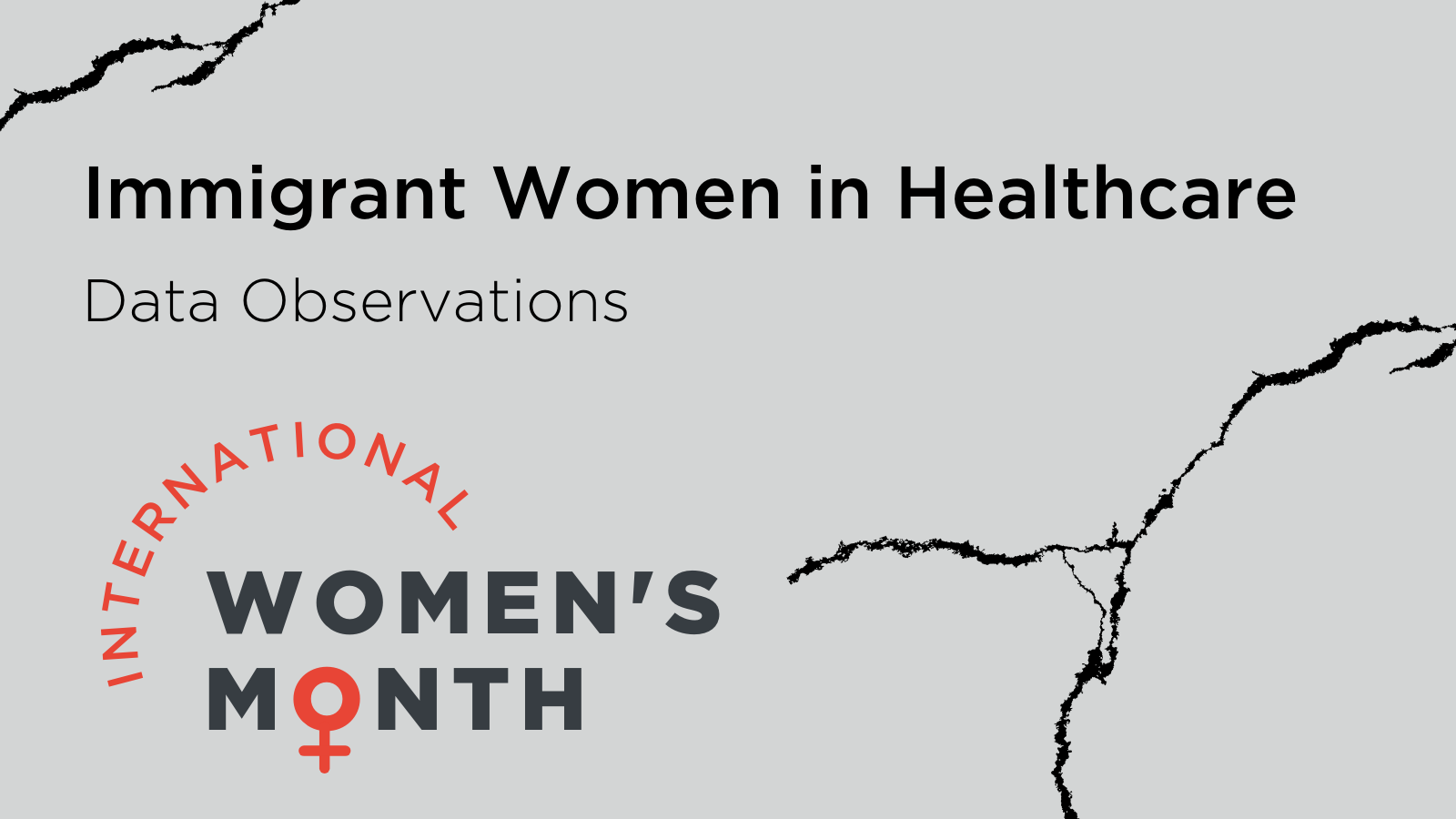
International Newcomer Women in HealthcareData Observations
By Collin Derrig
In two short years, the Covid-19 pandemic has transformed life as we knew it. It has also deepened our knowledge of and appreciation for the role which healthcare workers play in our society. Unfortunately, there is a key demographic essential to our healthcare system at large that is recognized more by the color of their skin or their accents they carry than by their life saving work. This demographic is International Newcomer Women, and we all owe them a heartfelt ‘thank you.’ Sadly, female International Newcomer healthcare workers still often get lost in the big picture. The following observations will partially explain the important role International Newcomer women play both nationally and locally in healthcare.
There are over 3.2 million foreign-born healthcare workers in the United States, comprising more than 17 % of the industry workforce. This is a disproportionate amount compared to the foreign-born percentage of the total population, only 13.7%. Of these 3 million+ International Newcomer healthcare workers, 2.39 million are female, or approximately 70%. While the most common career for foreign-born women working in healthcare is nursing (over 20%), these women are essential to the healthcare industry as a whole. Holding direct care roles such as physicians, home health aides, and therapists; as well as indirect care including administrative, technology, and other support staff, you will find an International Newcomer woman in every career in the healthcare industry. The national trend of International Newcomers being key here at home in Ohio and Cuyahoga County, however the details vary. Cuyahoga County is home to a total of 102,000 workers in healthcare related fields, while Ohio is home to a total of 867,000. Respectively there are 10,000 International Newcomer healthcare related workers in Cuyahoga County and 49,000 in the state. Interestingly, 1/5 of International Newcomer healthcare workers in Ohio reside in Cuyahoga County, while Cuyahoga County is home to only 1/10 of Ohio’s total population.
Healthcare Workers in Cuyahoga County by Gender and Nativity (ACS 2019 5-year Estimates)

Taking a closer look, excluding administrative and other non-medical healthcare positions, there are an estimated 77,600 healthcare workers in Cuyahoga County. Out of this number, 7,000 are International Newcomers and over 4,500 are female International Newcomers. That there are more female International Newcomers than male International Newcomers working in healthcare is unsurprising as over 79% of the county’s healthcare workers are female. Notably, International Newcomers as whole, and especially International Newcomer women play an outsized role as medical doctors. Although female International Newcomers comprise only around 6% of total healthcare workers in Cuyahoga County, they are 12% of all doctors and 30% of female doctors. Below are two charts showing in detail the proportion of International Newcomer women compared to other women across healthcare fields and their total numbers in said fields.


Both nationally and locally, healthcare workers have felt an outsized impact from the pandemic. According to numerous medical studies rates of depression, anxiety, stress, and other mental health issues have greatly increased for medical staff over the course of the pandemic. These intense psychological and physiological effects are frequently worse for minority healthcare workers, including International Newcomers, who already face other challenges in the workplace. Healthcare workers are also at much higher risk of being exposed and infected with Covid-19 and experiencing its potential life altering effects compared to the general population. Cuyahoga County is home to almost 20% of the state’s International Newcomer healthcare workers we can safely assume they have been similarly adversely affected by the pandemic. Especially with our COVID-19 case rates at times being among the highest in the state and the entire county. The thousands of International Newcomer healthcare workers here in Cuyahoga County and throughout Ohio have been key to stemming the effects of the pandemic and protecting all our lives. Recognizing this important role they play is the bare minimum they are due.
The data discussed above is just a small example of the key roles and impact that International Newcomer women play throughout our society. International Newcomer women own businesses, hold essential jobs, and support families and entire communities. The millions of International Newcomer women that work in essential industries like agriculture, retail, food service, and shipping have been just as key to our survival during this pandemic as those working in healthcare. These contributions of international women have existed long before the pandemic and will undoubtedly continue to be a key to our success as a community in the future.
To learn more about the impact of International Newcomer women, join Global Cleveland during our 2nd annual celebration of International Women’s Month Celebration throughout the month of March. You can find a link to our programming here.
Sources
Article 2020: International Newcomer Health-Care Workers in the.. | Migrationpolicy.org
International Newcomers in the United States | American Migration Council
International Newcomers as Essential Workers During COVID-19 – Center for American Progress
Impact of COVID-19 pandemic on healthcare workers (nih.gov)
Impact of COVID-19 pandemic on healthcare workers – PubMed (nih.gov)
COVID-19: a heavy toll on health-care workers – The Lancet Respiratory Medicine
ACS 2019 1 and 5 year Estimates/ US. Census Bureau
Women in healthcare | McKinsey
Women’s Safety and Health Issues At Work | NIOSH | CDC
February 23, 2022
Gateways For Growth Research Report

Our organization was awarded a grant to receive a customized research report that will help us improve International Newcomer inclusion in our communities!
Migration is Economic Development

Executive Summary
The sponsor of this analysis, Global Cleveland, is an organization, but global Cleveland is also a reality. Elaborating, when it comes to the task of economic and community development, think of a city as a feather in the wind, or a stick in a rapid of water. Global forces push and pull at places, affecting a city’s relevance, or it’s standard of living. Yet some indicators are better measures of where a city fits into the global order of things than others. This analysis shows that standard measures of “success”, like population size, are relics of a bygone era where size mattered. In today’s idea economy, a better measure is gauging the quality of life in city, not the quantity of lives. This analysis looks at GDP per capita for the nation’s large metros, defined as “the amount of output or income per person in an economy…that’s indicative of average productivity or average living standards.[i]”
The GDP per capita in the Cleveland metro is currently $ 57,700 and ranks 78th out of 374 metros. This is up from an inflation-adjusted $51,320 in 2010. To the extent Cleveland can prepare for progress entails examining what explains progress. The analysis looked at what features are driving GDP per capita growth across America’s metros from 2010 to 2019. To do this, Rust Belt Analytica deployed a machine learning algorithm called permutation feature importance. This is our “Progress Model”. Out of hundreds of variables analyzed, two clusters of features dominated the model results: educational attainment and Migration. That is, the rate of a metro’s GDP per capita growth could be predictively explained by the educational attainment of a region, and the Migration rates of a region. Migration features included the in-Migration of college- and non-college-educated foreign born, and the in-Migration of college- and non-college-educated native born, particularly if the domestic migrants were arriving from the Northeastern or Western parts of the U.S. This latter Migration pattern of coastal-to-inland Migration has been dubbed “The Rise of the Rest”, characterized as the convergence of American tech labor from the costly coast into the American heartland.
It is a pattern of Migration that highly-educated International Newcomers have in fact been doing for some time. The analysis found that the percent of Cleveland’s International Newcomers with an advanced degree was 21.4%, which ranked 8th out the nation’s largest 40 metros. Interestingly, 6 out of the top 10 most highly-educated cities for International Newcomers were in the geographic area of the Rust Belt, led by Pittsburgh.
The analysis finds that Migration is crucial to the evolution of cities. Migration does not only allow for the accumulation of human capital, but for global connectivity as well. Connectivity is part and parcel with the act of Migration, allowing for the deepening of a city’s “thought bank”. This depth of ideation is crucial to the process of innovation which, in turn, is crucial economic evolution. Put another way, Migration is economic development. It is today. It was yesterday. And it will be tomorrow. The issue for Cleveland is whether the region can leverage its global assets to incur its global relevance, and ultimately the increased well-being of its people.
